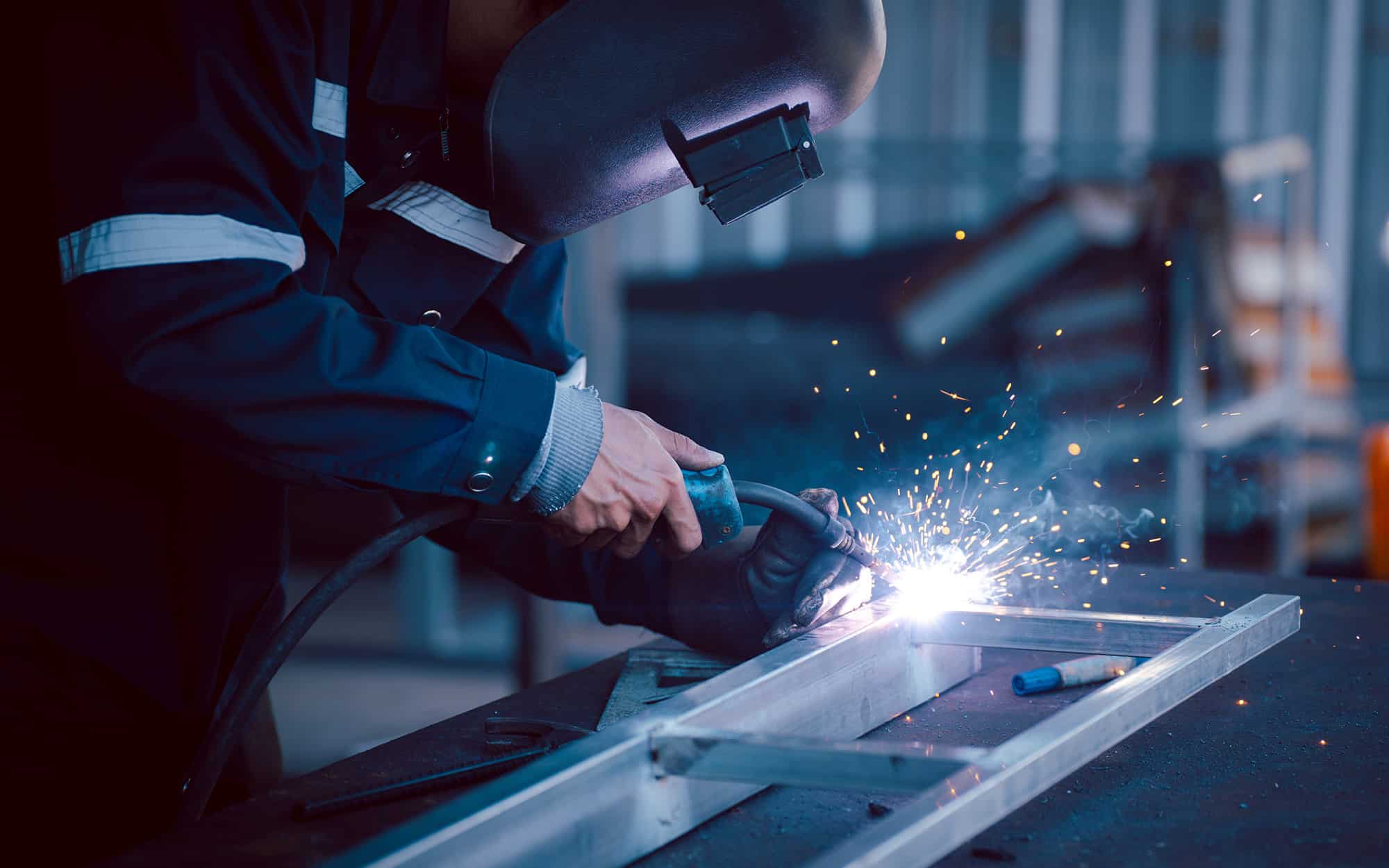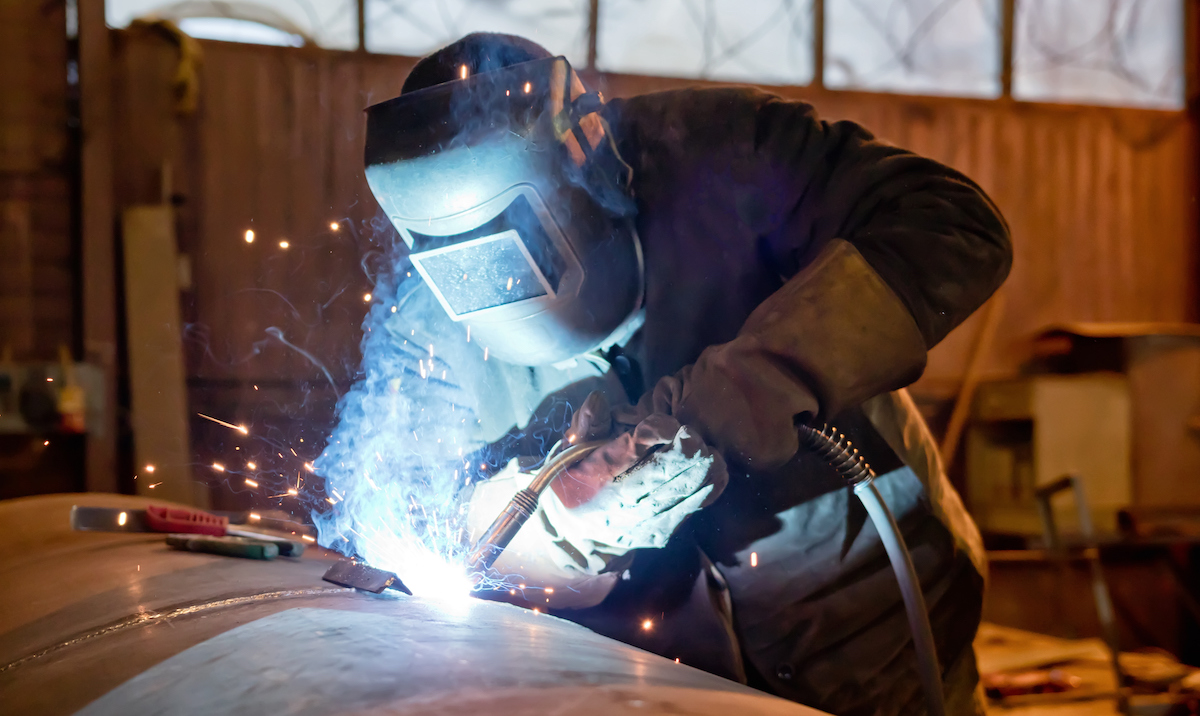Typical Welding Repair Issues and Exactly How to Address Them Efficiently
Welding repairs usually come across a variety of concerns that can endanger the honesty of the final product. Typical troubles consist of poor penetration, porosity, and imbalance, among others. Each defect offers one-of-a-kind difficulties that require certain methods for resolution. Recognizing these problems is necessary for welders aiming to enhance their results and skills. This conversation will check out these typical welding repair work problems and efficient approaches to resolve them.
Inadequate Penetration
Inadequate penetration occurs when the weld metal stops working to totally fuse with the base product, leading to weak joints and prospective structural failures. This concern typically comes from insufficient heat input, incorrect electrode angle, or incorrect welding rate. Welders may experience insufficient penetration as a result of a miscalculation of the essential specifications for a particular material density or type. Additionally, contamination on the base material's surface can prevent reliable bonding, aggravating the issue. To resolve inadequate infiltration, welders should ensure proper settings on their tools and keep a tidy work surface. Normal examination of welds is recommended to recognize any kind of deficiencies early, allowing for timely improvements and the avoidance of endangered structural integrity in welded assemblies.
Porosity
Porosity is a typical problem in welded joints that materializes as tiny gas bubbles trapped within the weld steel. This problem can jeopardize the integrity of the weld, resulting in reduced stamina and potential failing under stress and anxiety. Welding. Porosity usually occurs from contamination, wetness, or improper welding techniques, which permit gases to escape right into the molten weld pool. To attend to porosity, welders need to ensure proper surface prep work, maintain a tidy workplace, and use ideal welding specifications. Furthermore, selecting the right filler material and protecting gas can reduce gas entrapment. Regular inspection and testing of welds can aid recognize porosity early, assuring timely corrective activities are taken, thus maintaining the quality and reliability of the bonded framework
Imbalance
Misalignment in welding can emerge from various elements, consisting of incorrect arrangement and thermal expansion. Understanding the origin is essential for effective resolution. Several modification methods are offered to straighten components and ensure structural stability.
Reasons for Imbalance
Welding imbalance usually stems from a selection of underlying issues that can endanger architectural integrity. One main reason is inappropriate fit-up of components before welding, which can lead to spaces and irregular surface areas. Variations in thermal expansion during the welding process can additionally result in distortion, specifically if the materials being signed up with have various coefficients of development. Additionally, poor fixturing and securing may fall short to hold components securely in position, causing movement during welding. Poorly conserved equipment, consisting of welding makers and tools, might introduce inconsistencies in the weld bead, more adding to misalignment. Driver error, stemming from not enough training or experience, can likewise play a considerable role in developing misaligned welds.

Modification Strategies Offered
Resolving imbalance effectively requires a mix of corrective strategies customized to the details problems available. One common technique is making use of components or jigs to hold elements in the proper placement throughout welding, making certain constant placement. In addition, preheating the materials can help in reducing distortion and enhance fit-up. For substantial imbalance, mechanical adjustment strategies, such as making use of hydraulic jacks or clamps, can be used to remedy the setting prior to welding. Post-weld warm therapy might also be needed to ease stresses brought on by misalignment. Cautious evaluation and change throughout the configuration stage can avoid misalignment concerns from ending up being considerable troubles, promoting a smoother welding procedure and improving total structural integrity.
Distortion
Distortion is an usual challenge in welding that can develop from numerous aspects, including unequal home heating and cooling. Understanding the reasons of distortion is important for applying efficient prevention strategies. Resolving this issue not only improves architectural integrity however also enhances the overall high quality of the weld.
Sources of Distortion
When based on the extreme warmth of welding, materials frequently undertake changes that can result in distortion. This phenomenon mostly develops from thermal expansion and contraction throughout the welding process. As the weld location warms up, the product increases; upon air conditioning, it gets, which can create inner anxieties. Furthermore, unequal home heating across a workpiece can exacerbate these stress and anxieties, resulting in bending or bending. The kind of material likewise plays a significant role; steels with differing thermal conductivity and coefficients of expansion may react in a different way, causing uncertain distortions. Additionally, inadequate joint style and inadequate fixturing can add to misalignment throughout welding, increasing the chance of distortion. Understanding these reasons is important for efficient welding repair and prevention methods.
Prevention Techniques
Effective prevention strategies for distortion throughout welding focus on controlling heat input and making sure proper joint layout. Preserving a constant heat input assists to reduce thermal development and contraction, which can bring about distortion. Utilizing strategies such my review here as preheating the workpiece can additionally decrease the temperature gradient, advertising consistent home heating. In addition, picking proper joint styles, such as T-joints or lap joints, can improve stability and reduce tension concentrations. Implementing proper fixturing to protect the work surfaces in position additionally aids in preserving placement throughout the welding procedure. Lastly, staggered welding series can disperse heat a lot more uniformly, protecting against local distortion. By applying these methods, welders can considerably reduce the likelihood of distortion and improve the general quality of their welds.
Splitting
Breaking is a typical concern run into in welding repair services, usually resulting from different aspects such as inappropriate cooling prices, product option, or insufficient joint prep work. The incident of cracks can considerably jeopardize the integrity of the weld, causing possible failings during operation. To resolve this concern, welders should first examine the origin creates, ensuring that products are suitable and suitably selected for the certain application. In addition, regulating the air conditioning rate during the welding process is crucial; rapid cooling can cause stress and bring about fracturing. Correct joint style and preparation also add to minimizing the threat. Applying these strategies can boost weld quality and resilience, ultimately reducing the probability of cracking in ended up weldments.

Incomplete Blend
A significant concern in welding repairs is insufficient fusion, which occurs when the weld steel does not properly bond with the base material or previous weld passes - Montana Mobile Welding and Repair Fabrication. This problem can bring about weaknesses in the joint, potentially endangering the stability of the bonded framework. Factors contributing to incomplete blend consist of insufficient warm input, inappropriate welding strategy, and contamination of the surface areas being signed up with. To resolve this issue successfully, welders need to assure correct pre-weld cleansing and surface prep work, as well as change their welding parameters to achieve adequate penetration and fusion. Regular assessment during the welding process can also assist determine incomplete blend early, enabling timely rehabilitative measures to enhance the overall high quality of the weld
Overheating
While welding repair work can enhance architectural honesty, overheating offers a considerable obstacle that can result in material degradation. Too much warmth throughout welding can change the mechanical homes of metals, causing decreased stamina, increased brittleness, and warping. This hot plate welding phenomenon is particularly vital in high-stress applications where architectural integrity is extremely important. Determining getting too hot can include aesthetic inspections for staining or distortion, in addition to keeping an eye on temperature throughout the welding procedure. To mitigate the risks connected with getting too hot, welders should utilize appropriate methods, such as regulating heat input, changing travel speed, and making use of suitable filler products. Additionally, applying pre- and post-weld warm treatments can aid recover product properties and improve the general high quality of the repair, ensuring lasting efficiency and safety and security.
Frequently Asked Questions
What Are the Typical Indicators of a Welding Defect?

Exactly How Can I Examine My Welds for Top quality?
To examine welds for high quality, one can use visual inspections, ultrasonic screening, and radiographic approaches. Each strategy guarantees architectural honesty, recognizes flaws, and verifies adherence to defined requirements, ultimately enhancing the integrity of the bonded joints.
What Safety and security Precautions Should I Take While Welding?
When welding, one ought to prioritize safety and security by using suitable individual protective tools, guaranteeing proper air flow, safeguarding combustible materials away, keeping a clean office, and recognizing surroundings to avoid crashes and injuries.
Can I Fix a Weld Without Renovating the Entire Joint?
Repairing a weld without remodeling the whole joint is possible, relying on the damages (Welding). Methods such as grinding, including filler material, or using a welding process can properly address details problems while protecting the bordering framework
What Devices Are Essential for Effective Welding Repairs?
Essential tools for effective welding repair work consist of a welding device, cable brush, mill, protective gear, clamps, and filler materials. Each tool plays a crucial function in guaranteeing high quality and safety and security throughout the repair process. Porosity commonly occurs from contamination, moisture, or inappropriate welding methods, which permit gases to get this page away into the molten weld pool. Improperly kept tools, including welding equipments and devices, may present disparities in the weld grain, additional contributing to imbalance. When subjected to the extreme warm of welding, products commonly go through modifications that can lead to distortion. Splitting is an usual problem come across in welding repair services, usually resulting from numerous factors such as improper air conditioning prices, material selection, or poor joint prep work. A substantial problem in welding repair work is insufficient blend, which occurs when the weld steel does not appropriately bond with the base material or previous weld passes.